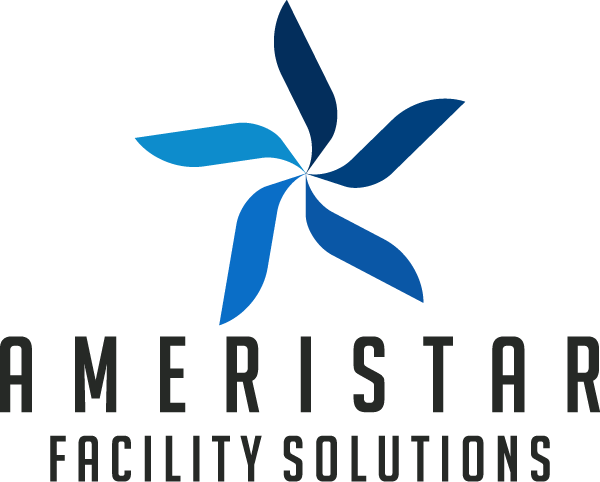Surface contamination is one of the most common concerns when it comes to infection mitigation. Dust and dirt particles or respiratory droplets rest on surfaces and contaminate them thereby creating the risk of spread of infections through touch and contact.
When an infected person coughs or sneezes, the respiratory droplets settle on the surfaces in the vicinity. These respiratory droplets carry germs, viruses, bacteria, and other disease-causing pathogens in them which then live on surfaces for hours or even days and transmit as you come in contact with those surfaces.
So, as you go on touching door handles, doorknobs, desks, tables, and other surfaces in a commercial facility, you expose yourself to all these germs and remain at risk of catching infections.
So, regular cleaning and disinfection become the best possible defense for mitigating infections. However, how much cleaning is enough cleaning? You need to know how long these germs survive on the surfaces to ensure that you’re cleaning in the most effective ways possible.
Well, there are various factors that affect the survival of germs and pathogens on surfaces. Let’s have a look at these factors in detail.
3 Factors that Affect Survival of Germs On Surfaces
Surface contamination is a major concern in commercial premises as they are heavily occupied and people constantly come in contact with different surfaces and even one another.
So, if germs are residing on the surfaces for a long time in such premises, the risk of infection spread increases by a large number.
It is therefore essential to know how long the surfaces remain infected with germs even after cleaning and disinfection.
Well, this can depend on various factors the most common factors being the type of surface, amount of germs, and the temperature and humidity in the environment.
Let’s dive deeper into details as to how these factors affect the life of germs on surfaces.
The Type of Surface
Respiratory droplets carrying germs and pathogens settle on different surfaces in their vicinity. Such surfaces could be hard surfaces such as door handles, doorknobs, table tops, desks, etc., or soft and porous surfaces such as clothes, tissues, skin, etc.
Germs and pathogens will reside longer on harder surfaces as opposed to soft surfaces. It’s for this reason that constant surface cleaning and disinfection are essential.
For mitigating the spread of infections from soft surfaces, maintaining cleanliness and personal hygiene are the most effective defenses. It’s best to maintain proper distance, wash hands frequently, and use masks and gloves wherever needed.
The Amount of Germs
How many germs have been transmitted to the surfaces also affects their survival on the surfaces? Microorganisms breed when they’re larger in quantity as they can reproduce very quickly. So, the more the number of germs on the surfaces the higher the risk of their breeding and spread of infections.
Since the germs can reproduce faster, they will also live longer on the surfaces as new germs are taking place of the older ones all the time.
The Temperature and Humidity of the Environment
The temperature and humidity of the environment also affect the life of germs on the surfaces. Germs tend to grow faster in hot and humid climates as opposed to their growth in colder temperatures.
So, when the climate around is hot with temperatures ranging between 40 to 140 degrees, germs will grow with a rapid speed and stay longer on the surfaces.
The best defense against this is to keep the facilities properly air-conditioned so that the germs do not have a chance of growing in number.
How to Eliminate Germs from Surfaces
With the risks of infections and diseases being a constant threat, you cannot let germs lurk around in your facilities. Cleanliness and hygiene are the only possible defenses against surface contamination.
With practices like regular cleaning and disinfection and a proper antimicrobial program for surface protection, you can ensure that germs don’t reside on the surfaces and promote a healthier environment.
The need is to be cautious and eliminate the infections at the first chance you get.
AmeriStar Facility Solutions Can Help
While surface contamination is a major issue, it can be easily resolved by instating regular cleaning and disinfection practices in your commercial facilities. AmeriStar Facility Solutions’ antimicrobial program can help protect surfaces by spreading a protective layer that kills germs as soon as they come in contact with the surfaces.
With such a program you can ensure that germs don’t live on your surfaces or spread infections. All you have to do is get in touch with them in any of the following ways-
- Visit our website: https://ameristarfacilitysolutions.com/
- Call us at: (570) 675-5525
- Email us: info@ameristarfacilitysolutions.com
Final Words
Surface contamination is a real hazard, especially when you’re allowing germs to stay longer on the surfaces. With proper cleaning and hygiene practices, you can minimize the life of germs on surfaces and contain the spread of diseases and infections.
We hope this article helped you understand how germs live on surfaces and the ways you can eliminate them for better health and hygiene.

